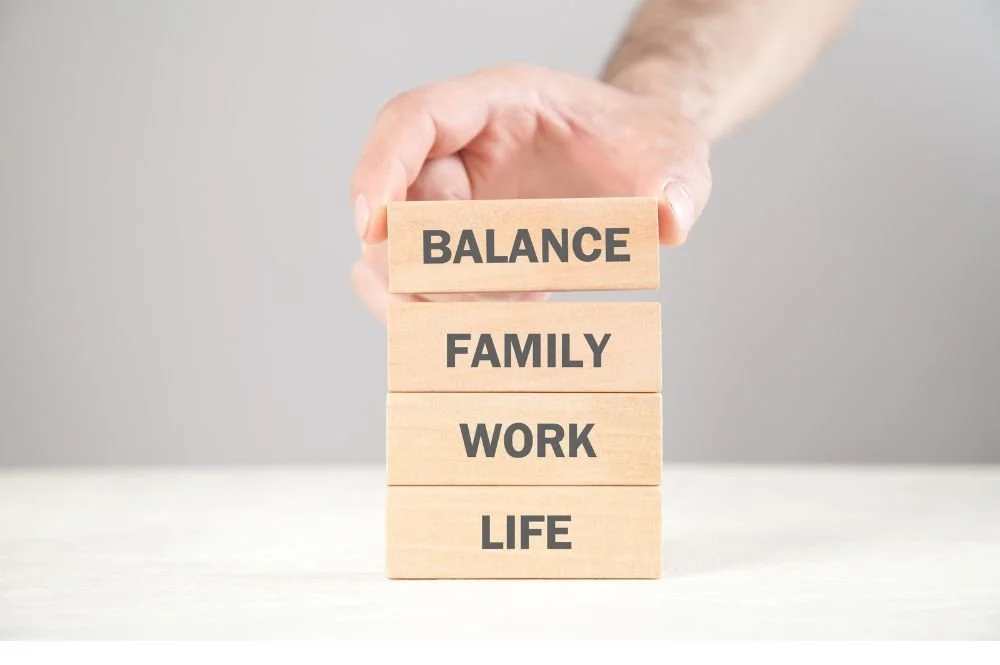Workplace burnout has become a global concern after recent years saw the blurring of boundaries between work and home and soaring mass resignations. This has affected many organizations' top performers, with more people feeling less productive, more exhausted, and more cynical about their jobs. Our previous article talks about the importance of recognizing burnout in the workforce in order to support employee well-being, which has since become the top priority of many organizations across the world.
Organizations have been implementing strategies such as training, resources, and benefits in order to protect and support their employees. While it is key that every stakeholder continues to advocate for a more positive organizational culture in the workplace, workers can simultaneously support their physical and mental health with proactive work-life boundaries and healthy, evidence-based habits. Let’s take a closer look at how to do this below.
Take your lunch break
A 2022 survey by Sharebite found that 43% of employees surveyed said they were too busy and would forget to eat at work, while 39% skipped lunch entirely to finish their work as quickly as possible. Contrary to the desired effect, however, not taking a break has actually been associated with lower productivity levels and mental focus.
51% of employees agree that lunch breaks help them focus on work and be more productive. Recent research tells us that taking your lunch break can actually benefit overall productivity instead of taking away from it because employees are better able to provide quality output. To further save on time and expenses, meal planning apps can help you prepare your lunches at home so that you don't need to line up at restaurants or the company cafeteria. Mealime is a popular choice for time-crunched cooks. The app hosts recipes, shopping lists, and inspiration for meals that can be prepared in 30 minutes or less.
Practice and develop mindfulness
Mindfulness is more than a simple mindset. According to a 2021 study published in the Journal of Occupational and Organizational Psychology, teaching mindfulness as a cognitive–emotional segmentation strategy can have positive effects on psychological detachment, psychological work–family conflict, and work–life balance satisfaction. That’s because individuals learn to focus on the present after work and avoid thinking about past or future-related work issues, which allows them to reduce any spillover between work and private roles.
There are different mindfulness exercises that one can start with, from guided meditations to mindful yoga. This article on yoga talks about how it's an especially helpful movement meditation that allows you to enjoy stillness and surrender to the present while also relieving pain and strengthening your body. It is also an easy intervention to request and set up at the workplace, which simultaneously nurtures relationships among co-workers while also reducing perceived stress in employees. Six studies of over 200 participants practicing yoga interventions at the worksite have already reported positive results in improving individual and organizational health, morale, work motivation, performance, and more.
Make your bedroom conducive for rest
Taking work home can blur the lines for work-life boundaries and eventually lead to overwork and exhaustion. This phenomenon has only worsened after the work-from-home setup grew in popularity. Maintaining a clear boundary between the two, whether through physical distance or clear scheduling, is key.
Your bedroom, at the very least, should be retained as a space for rest. This can be done by keeping all work-related items in another room, decorating with blue bed covers, and, as this post suggests, investing in an ergonomic mattress. Strengthening the mental association between your bedroom and sleep encourages you to put work down, rest, and focus instead on your own welfare. According to a 2023 article by the Sleep Foundation, proper rest can significantly decrease your chances of making errors at work the next day, hence boosting your productivity and job performance.
Pursue a non-work passion
To spend more time outside of work, this study finds that many high-level executives have made it a priority to find a non-work passion. These serious leisures range from cycling to music to handcrafting greeting cards, and have been found to effectively help CEOs cope with the demands of their jobs. Hobbies also provide them with a sense of fulfillment and individualism. If you're unsure where to start, try experimenting with free apps such as Headspace for meditation, Duolingo for language learning, or Gaia GPS for hiking. These allow you to enjoy new hobbies without commitment until you find the one that strikes your genuine passion.
With these tips, you will come closer to being in control of your career, relationships, and life. Creating a healthy work-life balance takes effort but the result is better job satisfaction and a professional and personal schedule that you can look forward to.
Bring our workshops to your workplace.
Written exclusively for break-through.ca
By Laura Rose
Laura Rose has been working in human resources for the last ten years. While she finds passion in her work, she equally enjoys outdoor activities such as hiking and bait fishing in her spare time.

